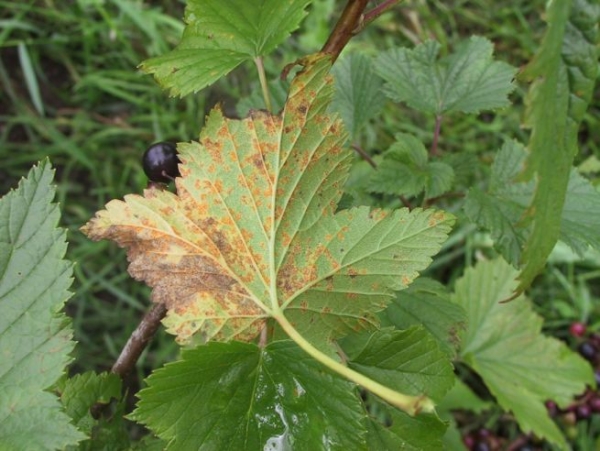Many gardeners and gardeners grow currants on their land. But, so that a good harvest will please for many yearsIt takes a lot of effort.
All varieties of currants are subject to various diseases. There are more than 70 species of insects that harm shrubs. By their activity they lead to a decrease in the yield and the complete death of the plants.
In order to time to save currant plantations from diseases and pests, need to know their symptoms and ways of neutralization.
Table of contents
The main diseases of black and red currants and treatment of them
Mealy dew on leaves: how to treat?
Mealy dew is caused by the marsupial fungus Erysiphales. With the disease on the surface of young leaves and berries formed white loose scurf. Mealy dew is not common.
If symptoms are recommended spray Fitosporin shrubs or a pharmacy iodine solution. If this treatment is not effective, you should apply 1% blue vitriol.
The treatment measures carried out in time make it possible to quickly overcome the disease. In any case, the presence of the disease indicates the deterioration of the currant bush.

Anthracnose
Anthracnose - a fungal disease currant bush. Humid climate is favorable for the development of the disease. The place of vital activity of the fungus are green young shoots.
At the initial stage of anthracnose, small dark spots appear. They gradually increase with the progression of the disease.
Spots deform the leaves and fruits, and also have a negative impact on the entire bush. Anthracnose causes premature falling of foliage and decrease in bush's winter hardiness.
To destroy the pathogen anthracnose apply fungicides in accordance with the instructions. The most well-known drugs to treat the bush are: "Fitosporin", "Previkur", "Acrobat", "Ridomil".
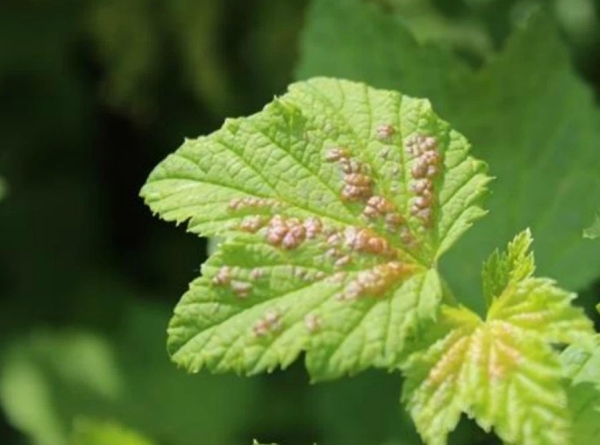
How to deal with terry?
The main causative agent of currants terry kidney mite. Terry currant is characterized by an ugly state of the extreme leaves. With the progression of the disease, the flower brush becomes thinner, and the scales replace the flowers.
There is a strong stretching of the leaves of young shoots. From the five leaves, they turn into three leaves. Veins become rough. The color of the foliage becomes dark green. Disappears spicy aroma, characteristic currants.
How to fight? Spray the plant 1% suspension of colloidal sulfur or lime-sulfur decoction.
The treatment is performed during the period when the mite leaves the old kidneys. After 10 days, re-treatment.
If the damage is severe, two more spraying is required (at the end of flowering and picking berries).
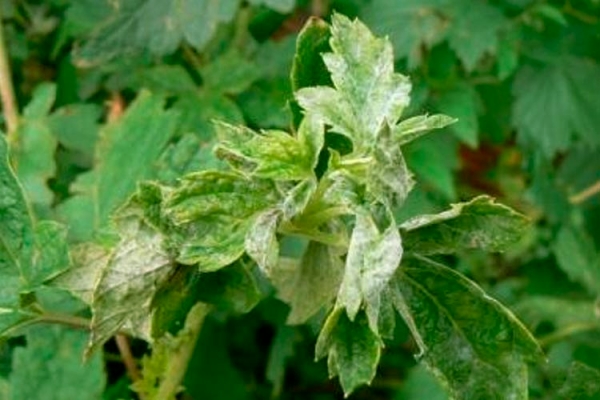
White spot or septoriosis - what to handle in summer and spring?
White spot or septoria causes the fungus Septoria sibirica. This ailment is one of the most common.
Septoria is characterized by the appearance of small brown spots on the surface of the leaves. In the future, they become white, but the brown edging remains.Spots are able to spread on berries.
Harm from white spot:
- premature leaf fall;
- stop the growth of the bush and its wilting;
- the death of the crop.
For the treatment of currant plantings and soil carry out the treatment of "Nitroferon" or copper sulfate in the form of a solution. The event should be carried out in the spring before the start of bud break.
In summer, four-stage processing is allowed. 1% solution of Bordeaux mixture or copper oxychloride.
For prevention it is necessary monitor soil moisture, timely destroy dead foliage, row currant plantings, process and dig up soil in the autumn and early spring period.
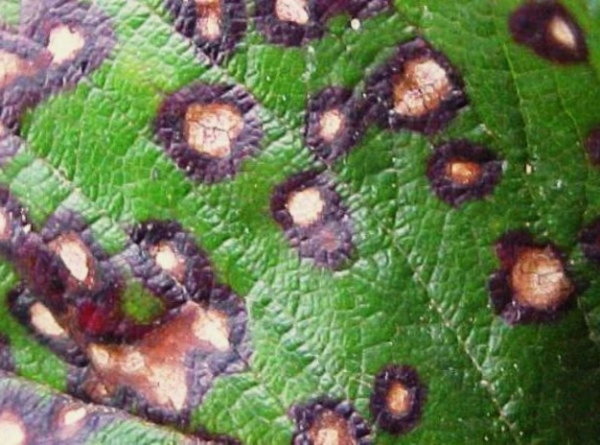
What to do with rust?
There are two varieties of rust currant: columnar and goblet.
Crown rust causes mushroom Cronartium ribicola Dietr. The pathogen has a negative effect on foliage.
On the underside of the leaves, orange growths develop, which, when powdered, form many bright spores. Yellow spots appear on the upper side of the leaf.
Columnar rust appears on currant bushes in early August and is rapidly spreading. The disease causes a massive fall of the leaves ahead of time and reduces yield.
Also, with columnar rust, there is a decrease in the growth of young animals and a decrease in the supply of nutrients.
Glass rust causes the fungus Puccinia ribesii caricis. With this disease, bright orange pads develop on the foliage, flowers and ovaries.
Active infection occurs at the flowering stage. For this reason, flowers and ovaries are badly damaged.
Humid climate and neighborhood with sedge favorably acts on the harmful fungus. Glass rust affects almost all foliage and flowers. This causes their premature fall and leads to a significant decrease in yield.

For both types of rust currants can be treated equally. Fungicides "Topaz", "Previkur", "Fitosporin-M" inhibit the development of the pathogen, do not allow disputes to ripen and divide.
Also allowed to spray bushes with 1% Bordeaux liquid.
As a preventive transplantation of plants for elevation, drying of the soil, removal of sedge thickets.
Why does off-shot drying of shoots occur?
Nectrious drying of shoots causes the fungus Nectria ribis. The disease is characterized by the formation of orange-colored spots on the branches and shoots.
They gradually grow and are transformed into bulky tubercles. At the stage of maturation of the spore, the tubercles are painted black, and the young processes dry and die.
When the first signs appear, it is necessary to start a struggle: to cut off the infected branches and burn them. Sections are sanitized by Bordeaux mixture and treated with garden pitch.
For prophylaxis should regularly remove weeds, clean up fallen leaves and make feeding.
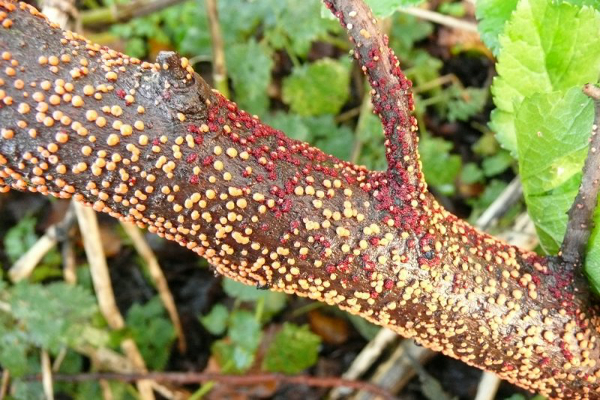
Striped mosaic: disease control measures
Striped mosaic is a viral disease. Ailment is characterized by the appearance of a bright yellow pattern on the leaves around the main veins after blooming.
No cure for striped mosaic: Infected bush should be removed.

Major pests: correct treatment from them
How to process a bush from currant leaf midge
Currant leaf gall midges are brownish-yellow mosquitoes. Insects lay eggs on young leaves of growing shoots.
Unblown leaves are damaged by the larvae. In the future, they freak out and die. Shoots stop their growth and begin to branch incorrectly.
Damaged shoots should be cut. no hemp in summer or autumn (until mid-September). Be sure to dig up the soil in the autumn season.

How to save the crop from currant Zlatka?
Currant Golds - greenish-copper beetles up to 9 mm long. The legless, flattened larvae with an extended anterior end are yellowish-white. They prefer the core of the currant branch.
The top of a damaged shoot dries out, and then the whole shoot dies. As a result, reduced fruiting bush.
To get rid of currant zlatka necessary conduct low pruning and burning of affected branches.
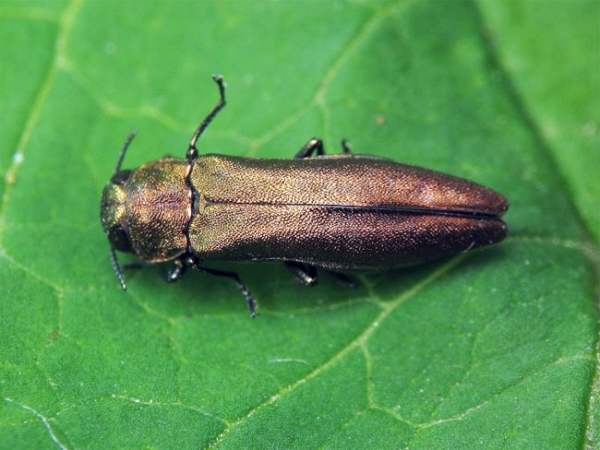
How to spray from spider mites?
The spider mite is considered a small sucking pest. He lives on a sheet from the bottom and he weaves the surface with his cobwebs.
Damage is characterized by the formation of a bright spot at the beginning of the infection, then a complete discoloration of the area. Heavily damaged sheets take on a marble look, eventually drying and falling.
Active development of ticks occurs from July to August.
For spring treatment (during bud break) the bush is sprayed with acaricides. Drugs with sulfur can cause leaf burns.
With a strong defeat spend re-spraying. Acaricide can be added to the chlorophos solution and applied after flowering.
For prophylaxis fallen leaves are destroyed, and the soil is dug up.
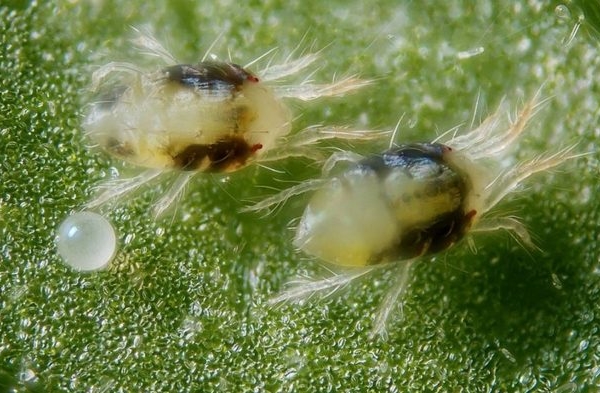
Currant glass and plant care
Currant glass bowl - this is a 1.5 cm long butterfly. It is covered with black scales with a lilac shade. On the abdomen of the glass-case there are light transverse stripes.
Female pests are able to lay up to 60 eggs in the cracks of the bark of the branches. Caterpillars of white color appear that gnaw through the core of the branches and make wintering walk in them.
By next fall, they reach a length of 2 cm, but do not go outside. They are inside the currant branches spend another winter.
At the end of May, the larvae gnaw out and pupate. In June, butterflies fly out. After flowering, the branches damaged by the larvae wither and dry.
For prophylaxis regular inspections of plantings with signs of glass.It is important to time pruning and destruction of damaged branches.

How to get rid of firearms?
Firestrike is a small gray butterfly 1 cm long. The pupae of the flame-guns winter over currant plantations. During flowering butterflies lay eggs in flowers. This leads to the defeat of the flower.
The presence of pests can be determined by the presence of hatched caterpillars on a bush and spider web tangled. Caterpillars feed on currant berries.
This cover will not allow pests to get out of the soil. After flowering sheets can be removed.

What to spray on the moth?
Gooseberry moth - butterfly with wingscovered with black and yellow spots. Usually, she prefers gooseberries, but she also wants to eat currants.Laying eggs from the back of the leaves.
Emerging caterpillars devour the leaves from all sides. In the middle of summer, they turn into pupae and are hung along branches.
For prevention it is necessary:
- carefully clean and cultivate the land;
- collect all the pupae in July and destroy;
- process urea in the fall;
- spray plantings ("Fitoverm", arsenic calcium DDT and others).

Processing and spraying bushes in the fall with chemical and folk remedies
Processing currants in the fall carried out in order to get rid of various pests and diseases. After all, with the onset of spring, all microorganisms come alive and begin their vigorous activity.
In order to protect the currants from pests and diseases, a number of activities are needed in the autumn:
- do autumn digging of soil around the bushes;
- destruction of fallen leaves;
- pruning damaged, weak and old branches;
- preventive spraying.
For preventive spraying Experts recommend the use of chemical solutions, which include drugs from pathogenic microorganisms and pests.
When spraying red and black currants must adhere to the recommendations:
- The procedure is best done in cool weather. In warm temperatures, parasites and pests multiply faster.
- The optimal is the holding of 2 procedures with a break of 10 - 14 days.
- Before spraying, release the plant from the sick and old parts. Deleted items destroy.
- To enhance the immune system of currant bushes is recommended to make mineral or organic fertilizers.
We struggle with diseases and pests of currants without chemicals:
Timely care of currant bushes, processing them from pests and diseases - pledge of growing a healthy plant over the years and getting a good harvest.
